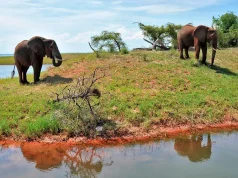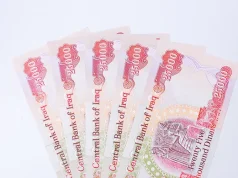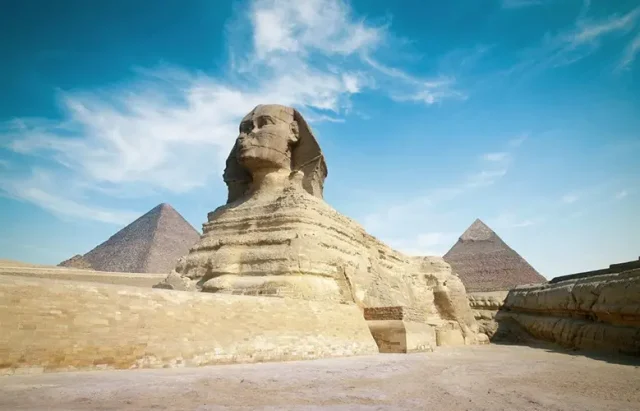
Tourists started coming to Egypt over 5,000 years ago, but the list of treasures keeps growing. Recently a fabulous new statue of Ramses II has been unearthed, ancient tombs discovered, gold-tongued mummies brought to light, and an incredible 2,500-year-old funerary tunnel revealed. No surprise that Egypt is one of Lonely Planet’s Best Destination affordable choices for 2024, or that Egypt’s culture and heritage has filled museums worldwide.
Cairo itself is undergoing an ambitious program of restoration and development that will make it an attractive city break option for European tourists. The Citadel of Saladin in Cairo, built in 1173, has been extensively revamped. Countless other architectural gems, including domes, minarets and a 12th-century synagogue have also been restored while tourist infrastructure has been improved and extended. There is a new 4.7 km walkway along the Nile and exciting developments in hotels and resorts. Old Cairo is being restored and pedestrian zones are established.
Cairo City Break Program and A New Era of Luxury Tourism
At the heart of Egypt’s strategic vision is the Cairo City Break program, designed to transform the capital into a vibrant, must-visit destination for long weekends. It promises a rich tapestry of ancient heritage, cultural depth, and contemporary energy, offering visitors a unique blend of historical and cultural sites spanning Pharaonic, Coptic, and Islamic eras.
This endeavor is expected to extend the average tourist stay in Cairo from the current three to four days to an impressive 12 days.
The initiative’s early achievements include the forthcoming visitor center at the Pyramids of Giza and the newly opened towers at the Salah Al-Din Citadel, enhancing the historical immersion of these iconic sites and offering a glimpse into the city’s defense strategies in the 13th century.
“There is no other city that offers visitors a journey through the epochs of every great civilization, starting from 3500 B.C. Our commitment is to make Cairo a destination that invites exploration over multiple visits or an extended weekend,” stated the Minister of Tourism and Antiquities, H.E. Ahmed Issa.

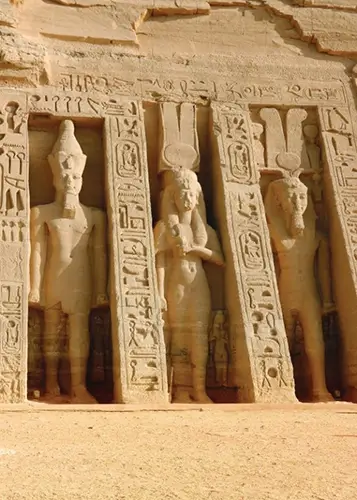
BIG CHANGES AT MAJOR SITES
- The Giza Pyramids Revamp. Egyptian Tourism Board is taking steps to enhance customer experience at archaeological sites. A prime example is the opening of a new visitor center, planned within the forthcoming transformation at the Pyramids of Giza in a few weeks.
- A major improvement of the visitor infrastructure around the Pyramids includes new hotels, restaurants, hop-on hop-off electric transport and shady seating areas, plus new photographic vantage points to guarantee that essential shot.
- The Grand Egyptian Museum is opening in 2024 and will be the largest museum in the world dedicated to a single civilisation. Some areas are already open, including “Tutankhamun – The Immersive Exhibition”, a 3600 spectacle that takes visitors into the life of the legendary king.
- Saladin Citadel Restored. In the heart of old Cairo, with magical panoramas of the entire city, Saladin’s formidable Citadel, founded in 1176 AD was home to the Egyptian government for 700 years. After extensive restoration work on its medieval towers, gardens and mosques this hilltop fortress is expected to become a major focus for visitors.
- Alexandria’s Graeco-Roman Museum is reopening after 18 years of restoration, displaying around 6,000 artifacts from the times of Alexander the Great, Julius Caesar, and Cleopatra.
- In collaboration with the University of Munich, and the Hildesheim Museum, The Egyptian Museum in Tahrir opened a permanent archaeological exhibition of stunning treasures from the Wadi al-Seboua Temple of King Amenhotep III, Pharaoh when ancient Egypt was at its peak of glory.
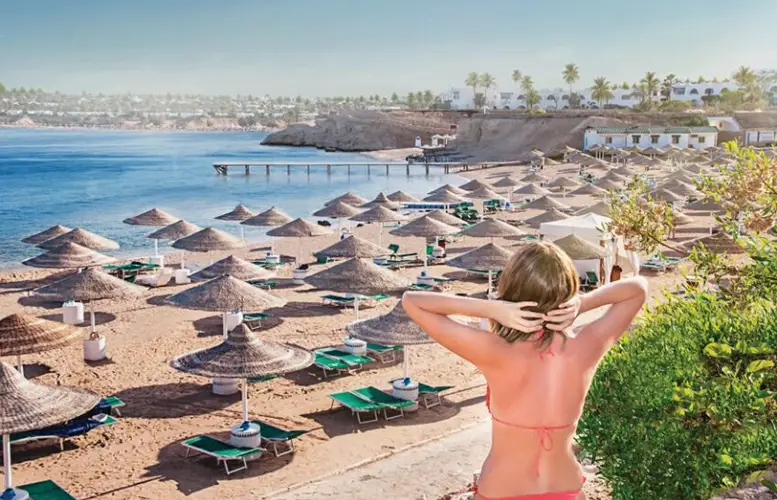

UNIQUE WELLNESS THERAPIES IN REMOTE DESERT OASES
- Wellness is a growth area for Egypt with new resorts like Naya building on ancient traditions.
- Siwa Oasis has 230 natural springs and a thousand free-flowing wells that help with rheumatic conditions.
- In the Western Desert, the Bahariya Oasis has beneficial sulphur and mineral waters.
- Kharga Oasis, situated in the far south, was once a way-station on the camel trade route to Africa and has deep therapeutic wells renowned for treating skin conditions and arthritis.




